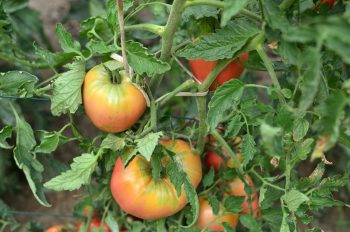
Fall is the perfect time to create new space for new growth. As the summer season is ending, this is a fantastic time to harvest what you have grown all summer long. If you’re interested in more information about great crops for the fall season, this article has some great ideas.
Just like any other garden task, harvesting is detailed, but not difficult. When done right, it’s an activity that everyone in your family can participate in and enjoy.
After the hard work of growing your crops successfully, you need to ensure you harvest them properly. Be sure you collect them at the right time, for peak flavor and optimal storage.
If you are completely new to gardening, Getting Your Garden Started offers some helpful information on how to get your project going, whether it includes flowers or veggies.
Here are some great tips on how and when to harvest some of the most popular summer vegetables.
Green beans
The best time to harvest green beans is when they are yet to fully mature. That is, once the seeds begin to fill the pod before the seeds appear lumpy in the pod. The green beans are tender and tastier if they are out of the pod while faintly velvet.
You need to pick the beans continuously, as the plant is likely to produce more pod if you continually pick the existing ones. This is great news if you are a green bean lover, as the plant will become a “gift that keeps on giving” so long as you are harvesting regularly.
Summer squash
The best time to harvest summer squash is when they are firm, but not yet hard. Pick them while you can still pierce them with your thumbnail.
Also, ensure that they have developed a deep, rich color. Do not forget that summer squash is continuously productive. Therefore, if you want to slow the production down, pick both the male and female buds.
Tomatoes
The most critical thing to do when picking tomatoes is to ensure you preserve the flavor. You do not want to have sour tomatoes after a hardy growing season, just because you picked them too soon. Before you pick tomatoes, ensure they have smooth skin that is glossy and fully colored, and that they are neither too hard nor too soft.
Even if the stem is yet to fully develop to full coloration, you can still start harvesting if you plan to let the plants ripen after picking them. To avoid confusion, you need to know the color variations among your tomato plants.
You can still pick tomatoes off the vine before they are fully developed, and allow them to ripen on the countertop or windowsill. If you do so, just observe the lower end of the fruit, that where the color will begin to change.
Peppers
Peppers are the simplest veggies to harvest- you just pick them once they get to the size you want. Once the fruits are well formed, they are ready to be harvested. The secret is to pick them early, as doing so will increase their yield.
Pepper plants have a yielding limit, meaning they cannot bear more fruits than they can support. Therefore, for the new blossoms to begin formation, you need to pick the already formed ones.
Broccoli
Many people aren’t sure how to determine when broccoli is ready for harvest. The best thing to monitor is the broccoli florets, rather than the overall size.
Before you harvest, ensure that the florets are bulging and relaxed. As you collect, do not pull them off the head directly. Instead, cut along the stem to create a space for fresh autumn vegetables.
Conclusion
If you’ve got a summer yield that you’re ready to harvest as fall sets in, make sure you are taking the right precautions to guarantee you’re picking your veggies at the very best time. Making the right decisions about how and when to harvest your plants can make all the difference regarding the taste, quality, and amount of produce your well-tended plants will offer your dinner table!
